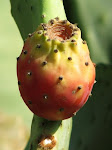With all those terrible events going on in the world: the terror attacks in Nice (France) and in Istanbul (Turkey), the killing of cops (USA), Erdogan and the coup failure (Turkey), daily terror acts here in Israel etc.., I felt a strange need to bring a smile to my face. So, this week I found myself at the Museum of caricatures and comics located in the city of Holon.
On the roof of the building, stands the self-portrait poster caricature of Zeev (pen name), the most famous israeli caricaturist. He died in 2002 at the age of 79. His family has donated all his cartoon works to the museum.
The poster with the self portrait was probably placed at first at the entrance stairs (see Wikipedia picture) and moved, for some good reason, to the top of the building.
Zeev - self portrait (Wikipedia)
the Peace process
the door to the elevator's room
gallery
activities' room


































































